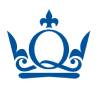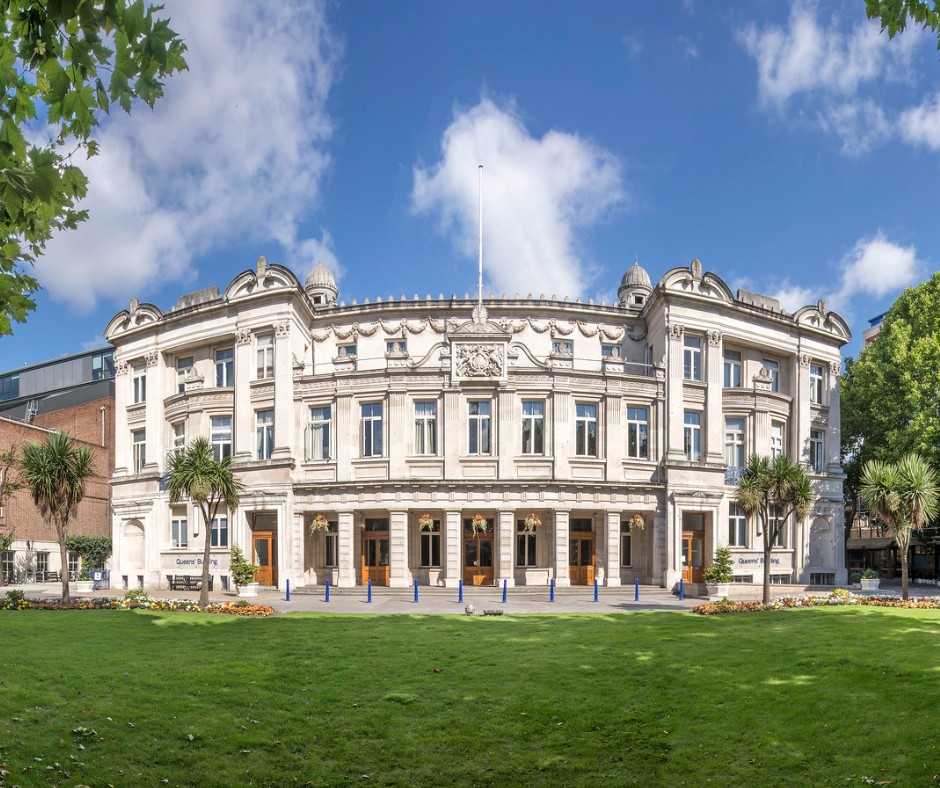Mile End Road, London E1 4NS, United Kingdom
Career Counselling

Queen Mary University of London grew out of four institutions (St. Bartholomew’s Hospital Medical College, London Hospital Medical College, Westfield College, and Queen Mary College); its history dates back to 1785. Research impact, community service, diversity, and inclusion are key tenets.
Queen Mary is a global university, in every sense of the term. It has five campuses in London, with the largest being at Mile End and Whitechapel. It also has four overseas campuses: Paris (in partnership with ULIP), Malta, Singapore, and China. A...
| Establishment year | 1785 (London Hospital Medical College founded) 1887 (People’s Palace Technical Schools founded) |
| Total Students | 36,000+ |
| International Students | ~14,760 |
| QS World University Rankings 2024 | =145 |
| Campus Size | N/A |
| Total Number of Campuses | 9 (5 in the UK) |
| University Website | https://www.qmul.ac.uk/ |
| No. of Schools and Divisions | 3 Faculties (Humanities and Social Sciences, Science and Engineering, Medicine and Dentistry) with 22 Schools and Departments within |
| Nobel Prize Winner Alumni | 9 (former staff and students) |
| No. of Education Programs | 137 (undergraduate), 310 (postgraduate) |
| Student to Faculty ratio | 11.5:1 |
Queen Mary University of London offers undergraduate and postgraduate courses through 3 Faculties, which are further subdivided into schools and departments.
There are also three Interdisciplinary Institutes at the University: the Life Sciences Institute, the Institute of Applied Data Science and the Arts and Culture Institute.
Queen Mary University of London makes offers to a large proportion of its undergraduate applicants, with UCAS data from 2017 showing that over 81% of UG applicants received an offer of admission. However, certain programmes are very competitive - for example, in 2019, when the BSc in Business Management (Social Change) course was introduced, 500 applicants competed for 13 seats with an acceptance rate of 2.6%.
Undergraduate admissions to Queen Mary University are made on the basis of A-Level scores (for UK students) or IBDP / Grade 12 scores (for international students). The University maintains a webpage where minimum eligibility criteria for UG courses are listed for most countries in the world. Certain courses may have additional criteria, especially in Mathematics and Medicine, and all applicants must display proficiency in English via GCSE (or equivalent) scores of Grade C or above.
The two most important entry criteria for postgraduate courses are excellent academic performance, in support of which applicants will need to provide transcripts and a degree certificate, if available, and proof of proficiency in English, as shown by recently taken test scores.
Undergraduate applicants to the university must submit their application through the Universities and Colleges Admissions Service (UCAS) website; they can choose up to five courses from different institutions. The deadline for most courses is 25 January, though Medicine and Dentistry course applications close on 15 October of the previous year. Students applying for those two courses must also appear for an additional examination: the University Clinical Aptitude Test (UCAT). The University sends out all offers before 18 May. Applicants can make submissions up to 30 June, though admission is subject to the availability of places.
Postgraduate applicants to QMUL should follow the following four steps:
Undergraduate students from the UK at the university pay an annual tuition fee of £9,250. Tuition fees for international UG students vary by course: they are either £23,950 or £26,250 per year for most courses, except for Dentistry and Medicine, where the amount is £44,250. International fees may also increase at the rate of 1.8% per year. Some UG courses have field trips, for which an additional amount is payable.
Postgraduate tuition fees vary by course, as well. All this information can be found in the PG course finder tool. A few sample fees: For the Accounting and Finance MSc degree, domestic and international students pay annual tuition fees of £20,850 and £28,950 respectively. In the Advanced Electronics and Electrical Engineering MSc, those fees are respectively £12,250 and £26,750, while the Applied Linguistics MA charges tuition fees of £11,450 and £22,250.
Living costs range from £5,000 to £8,500 per year for university accommodation, with most students budgeting an additional £5,000 per year for other costs (travel, personal, food, etc). These are applicable to both undergraduate and postgraduate students.

QMUL has multiple campuses. Five of these are located in London, with Mile End (where most humanities, social science, and science and engineering take place) and Whitechapel (home to most medicine and dentistry students) being the main ones. The other three UK campuses are at Charterhouse Square, West Smithfield, and Lincoln’s Inn Fields, where PG law students study. The University also has four overseas campuses. These are in China, Singapore, Malta (where an MBBS course is taught), and Paris (via a partnership with the University of London Institute in Paris).
The Queen Mary Students' Union runs over 60 Sports Clubs. Members of these clubs can choose to learn a sport from scratch or get to a level where they can represent the University in local leagues or even international competition. QMUL also uses sport as a tool for social impact: the Sport Leadership programme at the University allows students to use sport as a tool to drive positive learning in the local Tower Hamlets region. There are also Inter-Hall campus games that take place within the University.
Fitness and wellbeing are major focus areas on campus: from the Get Active programme that seeks to give all students the impetus to start some physical activity to the Qmotion Fitness centre, which is a state of the art gym with every facility imaginable and offers flexible membership plans to ensure that every member of the community can benefit from its services.

The University has a lasting culture of encouraging and incubating student start-ups. For example, a company that came out of a QMUL research spin-out (ApaTech), sold for $330 million in the year 2010. According to the Times Higher Education ranking of educational institutions by international outlook (taking into account the number of international students, research citations, and output), Queen Mary University of London ranked in the top 20 in the world.
QTemps is the online portal that coordinates part time employment opportunities for students and recent alumni in and around the university’s campus. Social responsibility is a part of the QMUL ethos: for example, the Queen Mary Legal Advice Centre has students of the School of Law give free legal advice to members of the public.
The Careers and Enterprise department at QMUL provides information and guidance about various long term employment opportunities and starting a business. It coordinates the EAST career journey for Queen Mary students: Exploring Options, Acquiring Experience, Showcasing Skills, and Transitioning to Next Steps. To this end, it provides multiple support interventions at every stage of the journey up to full time employment for students of the University. It also serves as a bridge between recruiters and students.
Though the tuition fees for international students at QMUL are high, there are multiple scholarship options for both domestic and overseas students; this can be seen by the fact that more than 92% of the London undergraduate students are from a state school background.
Any search for scholarships for both undergraduate and postgraduate students should start with the scholarship database operated by the University. This contains filters so that UG, PG, and PhD students can find scholarships and bursaries relevant to their level of study; it also lets applicants filter by School / Institute and the country that each scholarship is open to. Scholarships range from smaller amounts (£3,000 of tuition fee reduction) to the Chevening Fellowship, which can cover the entire tuition fee. The database currently contains details of 69 different scholarships, with deadlines and application guidelines; more are added in real time as they become available.
